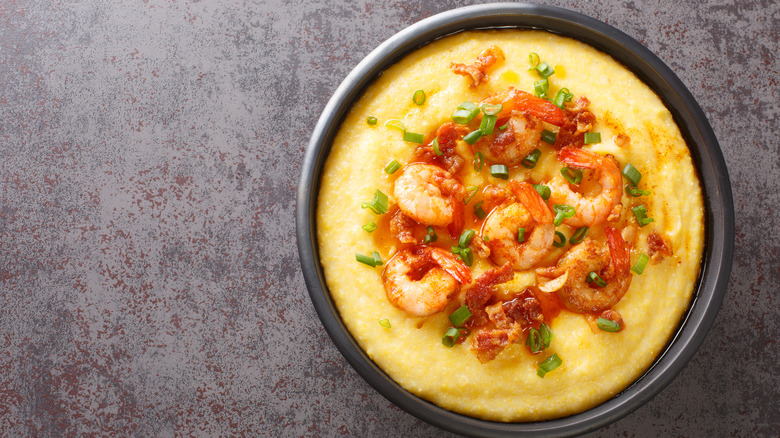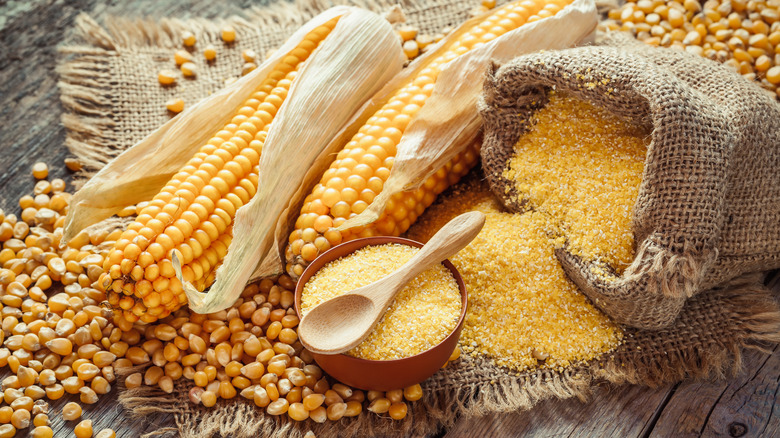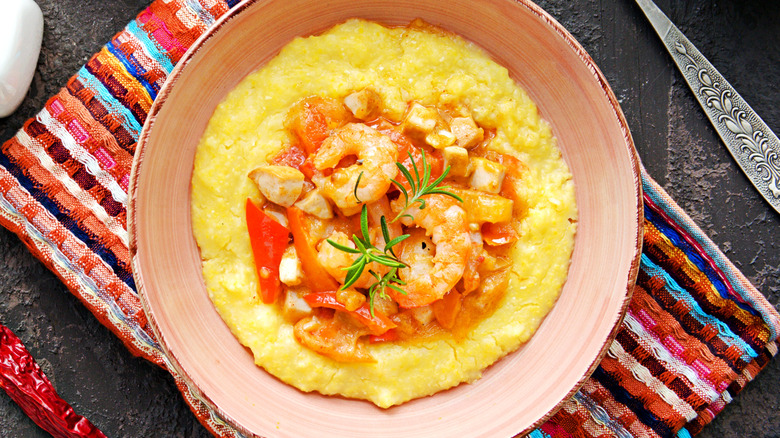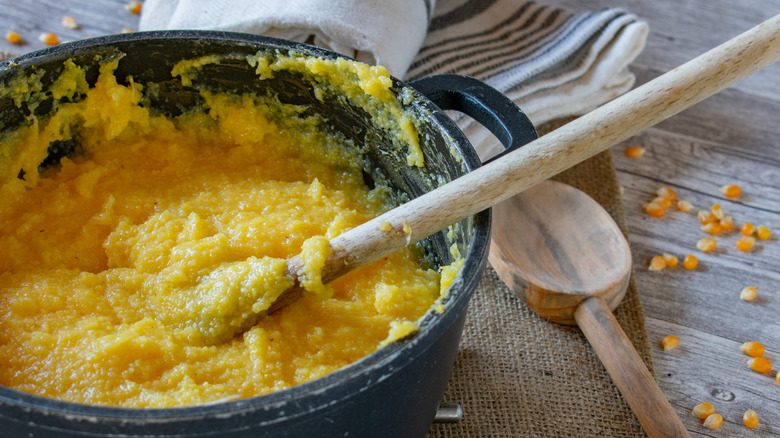What Is Funche And What Can You Make With It?
When it comes to comfort food, few things can rival a warm bowl of grits. This beloved staple of America's South has been enjoyed for generations, with its creamy texture and versatile flavor making it a go-to for breakfast, lunch, and dinner. In the Caribbean, grits take the form of funche, a popular cornmeal porridge dish. Both funche and grits have their unique characteristics, yet share a common influence of African and Indigenous cultures. Whether you prefer your cornmeal as grits or funche, there's no denying that this simple ingredient has a rich and flavorful history that has stood the test of time.
At its core, funche is made by cooking cornmeal with water or milk until it forms a thick, creamy consistency that's similar to Southern grits. On its own, funche has a slightly sweet and creamy flavor with a smooth, polenta-like texture. It's when you start to experiment with funche in other dishes that its true versatility shines.
The history of funche
To understand funche, one must first get to know cornmeal and at its most fundamental, corn. Epicurious hails corn as "the ancient engine that drives Latin American gastronomy." Forced settlement of those from the west coast of Africa and the Canary Islands brought new corn-based recipes to the Caribbean and Latin America with the introduction of dishes like "ngfungi, which later came to be known as funchi, or "funche," as it also was with gofio, a term from the Canary Islands," according to Cruz Miguel Ortiz Cuadra in his book "Eating Puerto Rico."
Ortíz Cuadra had this to say of funche: "Throughout the history of Puerto Rico, no dish made from corn has satisfied the appetite—especially around the tables of less advantaged families—more than funche." With funche being an accessible and filling dish, it was a dish of choice for Puerto Rican plantation owners who fed funche to their slaves. Over time, the reputation of funche, and many corn-based dishes, was deduced to "poor man's food due to its association with slavery" yet remains an important part of Latin American and Caribbean cuisine and history, as a symbol of resilience and perseverance of enslaved Africans in the face of adversity and oppression.
Classic pairings with funche
When deciding what to pair funche with, take inspiration from the ways grits are enjoyed, such as shrimp and grits. A general approach to funche is serving it as a base paired with meat or fish. The creamy texture of funche pairs well with savory flavors, making it the perfect accompaniment to grilled or roasted meats. It can also be paired with other hearty dishes for a robust flavor profile, like this habichuelas guisadas with funche and shrimp.
Another way to use funche is as a breakfast food, a common choice for older generations in Puerto Rico. Funche can typically be served with milk or coffee for a hearty and filling meal that will keep you satisfied all morning. A simple and sweet funche made with milk, sugar, and cinnamon can be an excellent base to add some extra flavor, like fresh fruit, nuts, or even a drizzle of honey.
How to make funche
To make traditional funche, begin by adding cornmeal to water, milk, or stock with your choice of seasoning. Whether you choose to make a sweet or savory funche, the spices you choose to add directly to the mixture are crucial to shaping the flavor profile of the dish. Von Diaz, author of "Coconuts and Collards: Recipes and Stories from Puerto Rico to the Deep South," makes funche de coco, or coconut grits with a combination of both coconut milk and chicken stock with butter for added richness.
Cook the cornmeal mixture over low heat stirring occasionally until the mixture becomes thick and creamy. The resulting dish has a slightly sweet and creamy flavor and a smooth, polenta-like texture that is the perfect start for a plethora of pairing ideas, whether it's savory meats or sweet fruit. Traditional funche is a delicious and versatile dish with an important history that is easy to make and sure to please any palate.



